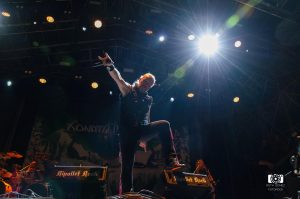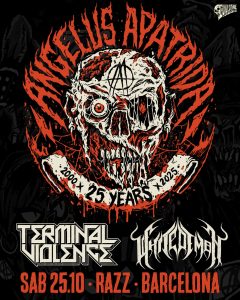Witches, Power, and Female Subjugation: A Gender and Social Analysis of La Maschera del Demonio (1960)

Introduction
La Maschera del Demonio (Black Sunday), directed by Mario Bava in 1960, is a seminal work in Italian horror cinema. Known for its gothic atmosphere, striking visuals, and its exploration of supernatural themes, the film follows the resurrection of a centuries-old witch, Asa Vajda, who seeks revenge on her descendants. Set in 17th-century Moldavia, the film blends elements of witchcraft, vampirism, and the supernatural to create a timeless horror narrative. However, beneath the surface of this gothic tale lies a subtext rich in gender dynamics, societal power structures, and the fear of female agency.
From a feminist perspective, La Maschera del Demonio can be interpreted as a reflection of the historical repression of women, particularly those who were seen as threatening to patriarchal systems. Asa, the film’s central character, represents the archetypal “dangerous woman,” one whose power must be controlled or destroyed by male authority. Her punishment, marked by torture and dehumanization, echoes the treatment of women accused of witchcraft throughout history. Through the lens of gender, this film invites an analysis of how women’s bodies, autonomy, and power have been historically feared and subjugated.
Brief Synopsis
The film begins with the execution of Asa Vajda (Barbara Steele), a witch accused of practicing black magic and vampirism. She is condemned by her brother, who orders her to be burned at the stake and to have an iron mask nailed to her face. Before her death, Asa curses her brother’s descendants, vowing to return and exact her revenge. Centuries later, Dr. Kruvajan and his assistant, Dr. Gorobec, accidentally resurrect Asa while passing through her crypt. Asa begins a campaign to possess the body of her look-alike descendant, Princess Katia (also played by Barbara Steele), in order to fully return to life and continue her reign of terror.
The Witch as a Feminine Threat: Female Power and Male Fear
Asa Vajda is introduced as a figure of both sexual and supernatural power, a combination that makes her a threat in the film’s patriarchal society. Her execution in the opening scene is brutal: she is tied to a stake, tortured, and a spiked iron mask is nailed to her face before she is burned. This violent spectacle of control and punishment reflects the historical reality of witch trials, where women were frequently persecuted for stepping outside traditional gender roles. In this way, Asa’s punishment serves as a commentary on the broader societal fear of women who refuse to conform to patriarchal norms.
Asa’s defiance is evident from the start. As she is being condemned, she mocks the men who accuse her and curses her brother’s bloodline, showcasing her refusal to submit to male authority. Barbara Creed’s concept of “the monstrous-feminine” is particularly relevant here. In The Monstrous-Feminine: Film, Feminism, Psychoanalysis (1993), Creed discusses how female monsters in horror often embody a fear of female power and sexual autonomy. Asa’s portrayal fits this archetype, as her sexual and supernatural powers must be suppressed through physical violence, and her curse represents a persistent threat to the male order. Asa’s character is not merely evil, but rather the embodiment of female agency that men seek to control or eradicate.
The Iron Mask: Symbol of Female Subjugation
The image of the iron mask being nailed to Asa’s face is one of the most memorable and disturbing scenes in La Maschera del Demonio. This mask serves as a powerful symbol of female silencing and dehumanization. Asa’s face, her identity, and her voice are literally covered and punctured by this mask, reflecting how patriarchal systems have historically sought to silence women who challenge male power.
The use of the mask also evokes associations with the idea of women being “masked” or hidden in society. In patriarchal cultures, women are often expected to conform to passive, controlled roles, with their autonomy and desires masked or suppressed. The mask, therefore, represents the broader social structures that seek to control women’s power, particularly their sexual and intellectual autonomy. As Judith Butler argues in Gender Trouble (1990), gender is performative, and women are often forced to perform roles that align with societal expectations. Asa’s forced mask represents an extreme manifestation of this dynamic, where her true nature—her power, intellect, and sexuality—is forcibly hidden and controlled.
Asa and Katia: Duality of Femininity
A significant theme in La Maschera del Demonio is the duality between Asa and her descendant Katia. Both women are played by Barbara Steele, emphasizing the mirror image between the two characters. Asa, the witch, represents the “dangerous” woman who defies patriarchal norms, while Katia embodies the innocent, passive female who conforms to traditional expectations of femininity. This duality reflects what Sandra Gilbert and Susan Gubar describe in The Madwoman in the Attic (1979) as the division between the “angel” and the “monster” in cultural representations of women.
Katia is introduced as a virtuous and beautiful princess, vulnerable and in need of male protection. Her characterization starkly contrasts with Asa’s, who is independent, sexual, and vengeful. However, the film complicates this dichotomy by making Katia the target of Asa’s possession. Asa seeks to transfer her consciousness into Katia’s body, symbolically merging the “good” woman with the “dangerous” woman. This plot device raises questions about female identity and autonomy. If Katia represents the ideal woman under patriarchy—submissive, beautiful, and non-threatening—Asa’s desire to possess her can be seen as an attempt to reclaim the power that has been stripped from women like Katia throughout history.
The Role of Male Authority: Control and Fear
Throughout the film, male characters play the role of authority figures who attempt to control or destroy Asa. Her brother, who condemns her, and Dr. Kruvajan and Dr. Gorobec, who unintentionally resurrect her, are all aligned with patriarchal institutions that view Asa’s power as a threat. The male protagonists seek to prevent Asa’s return and protect Katia, the idealized feminine figure, from being corrupted.
In this sense, the film reflects a broader theme in horror cinema, where women who step outside societal norms must be controlled or eliminated. As Carol J. Clover discusses in Men, Women, and Chainsaws (1992), horror films often portray female power as something that disrupts the social order, necessitating a male savior to restore balance. In La Maschera del Demonio, Asa’s supernatural abilities challenge the established order, and the male characters are tasked with preventing her return to power. This dynamic underscores the film’s subtext about the fear of female autonomy and the need to suppress women’s power to maintain patriarchal control.
Key Scenes: The Resurrection and Asa’s Seduction
One of the most significant scenes in the film is Asa’s resurrection. This scene is visually stunning, with Bava’s signature gothic style heightening the horror of her reanimation. From a gender perspective, this scene marks the moment when Asa begins to reclaim her power after centuries of repression. Her resurrection is not only physical but symbolic of the resurgence of female agency that had been buried by patriarchal forces.
Another notable scene occurs when Asa attempts to seduce Dr. Kruvajan, drawing on her supernatural allure to manipulate him. This moment underscores the fear of female sexuality that pervades the film. Asa’s seduction of Kruvajan is a manifestation of male anxiety about women using their sexuality as a form of power. Asa, in this sense, becomes a figure of both fear and desire, embodying the dual nature of women in patriarchal narratives: they are simultaneously objects of attraction and threats to male authority.
The Monstrous Feminine and Female Revenge
At the heart of La Maschera del Demonio is Asa’s desire for revenge against those who condemned her and her descendants. This revenge narrative is central to her role as a monstrous feminine figure. Asa’s curse and her subsequent actions are driven by a desire to reclaim the power that was taken from her, not just by men but by the societal structures that demonized and destroyed her. Her revenge is a symbolic reclaiming of female power, albeit framed within the context of horror and destruction.
As Barbara Creed notes in her analysis of the monstrous feminine, women in horror are often portrayed as vengeful figures who seek retribution for the wrongs done to them. Asa fits this mold, but her character is more complex than a simple villain. The film allows for a degree of sympathy towards her, as her initial punishment is shown to be excessively cruel and rooted in the fear of her independence and sexuality. Her desire for revenge is, in some ways, a justified reaction to centuries of oppression.
Conclusion: La Maschera del Demonio as a Feminist Critique of Power and Control
La Maschera del Demonio provides a rich text for feminist analysis, particularly in its exploration of the historical repression of women’s power and the societal fear of female autonomy. Asa Vajda, as a witch and vampire, embodies the “monstrous feminine,” a figure that challenges patriarchal control and refuses to conform to traditional gender roles. Through her resurrection and revenge, the film explores themes of female agency, subjugation, and the fear of women who possess power.
The film’s dual portrayal of Asa and Katia highlights the ways in which women are often forced into dichotomous roles in patriarchal societies, with the “good” woman being rewarded and the “dangerous” woman being punished. However, La Maschera del Demonio complicates this narrative by suggesting that the “dangerous” woman’s power is something to be feared because it threatens the male-dominated order, but it is also something that deserves recognition.
In conclusion, Mario Bava’s La Maschera del Demonio is not only a classic of gothic horror but also a rich commentary on gender, power, and the historical repression of women’s autonomy. Through its portrayal of Asa’s rise and fall, the film invites viewers to reflect on the ways in which women’s power has been demonized and suppressed in order to maintain social and patriarchal control.










